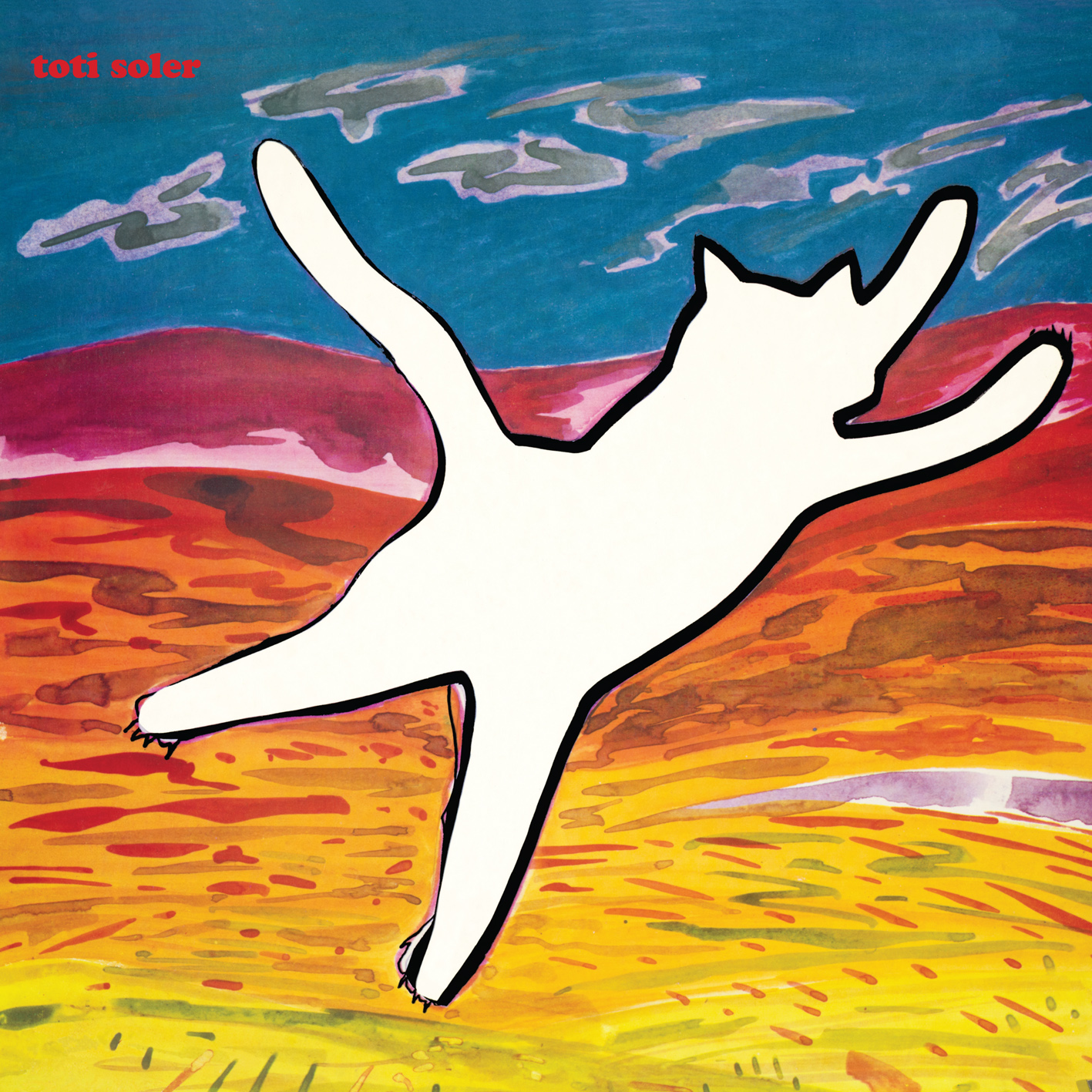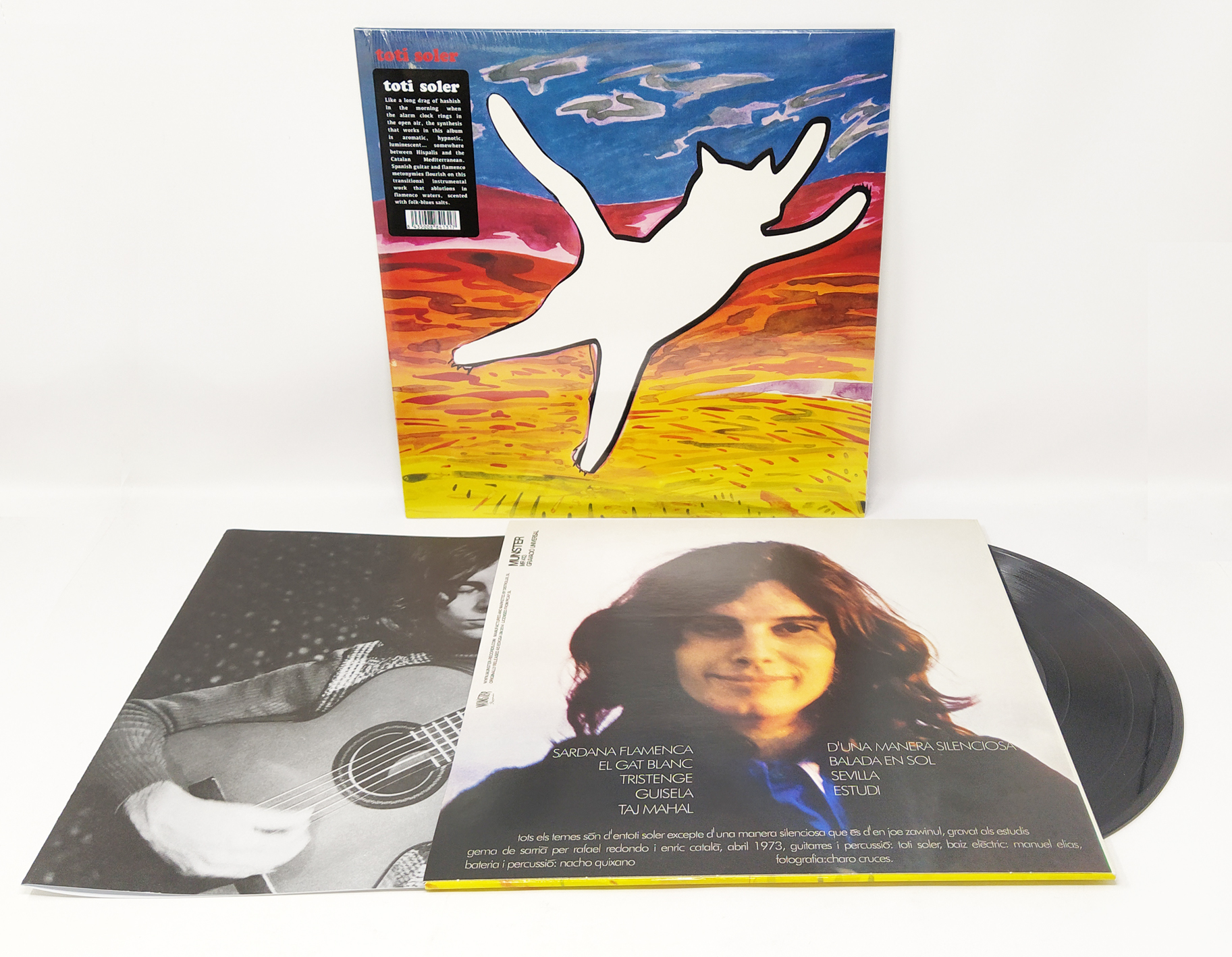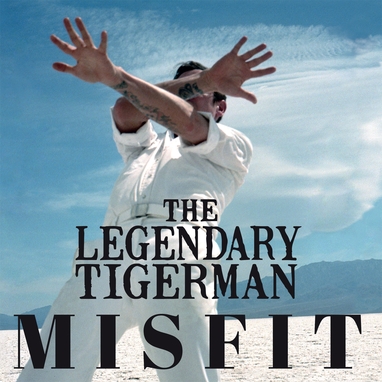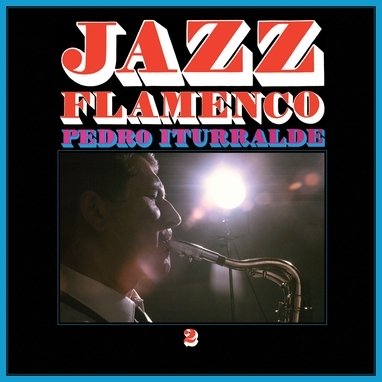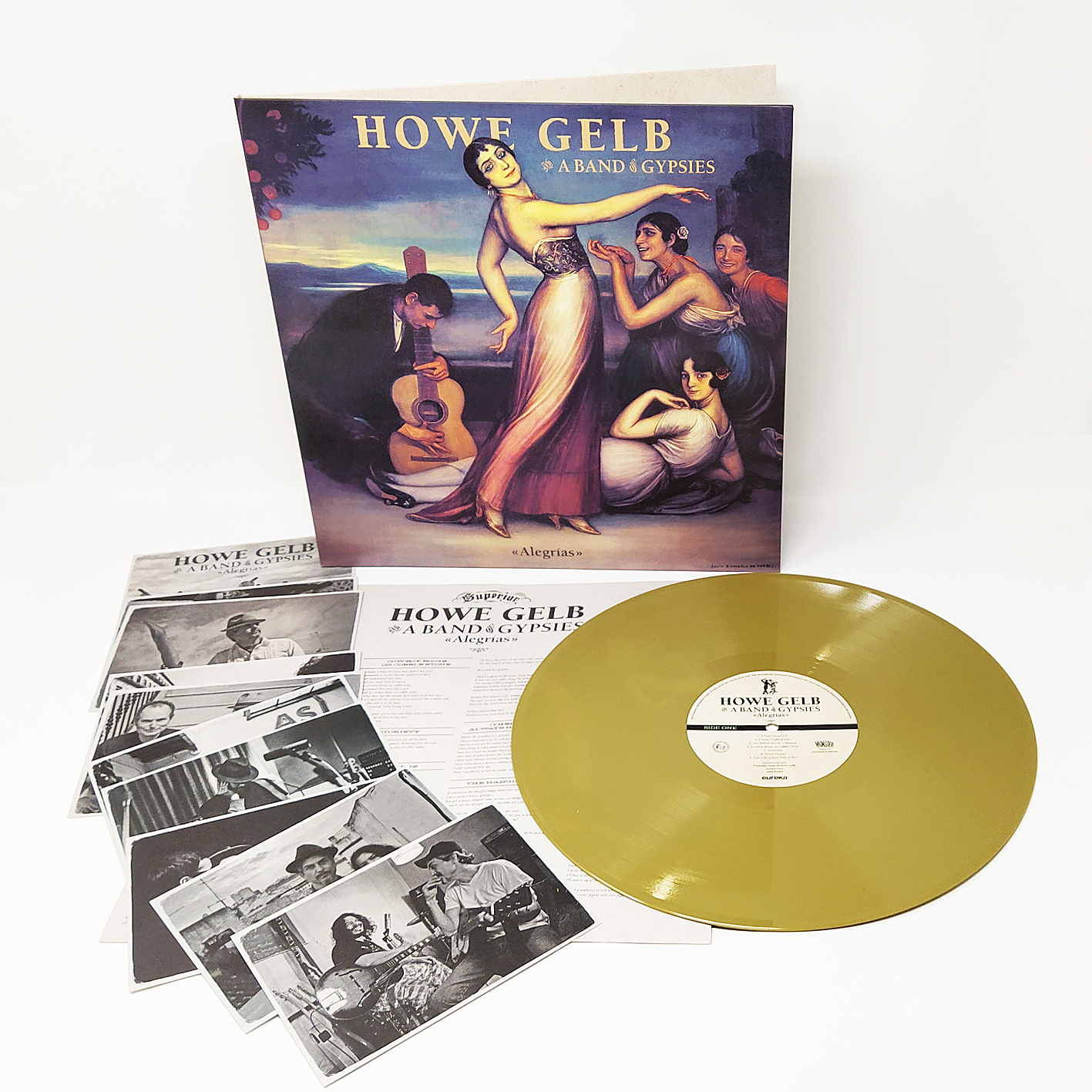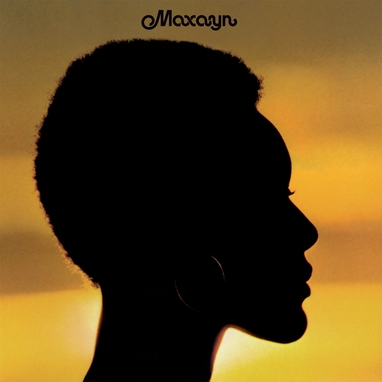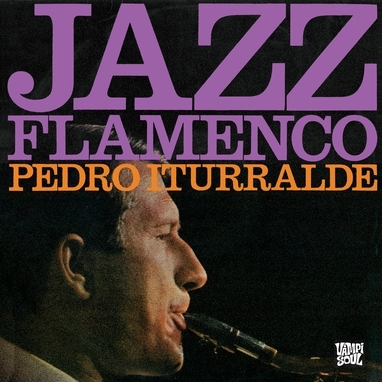Pata Negra
Guitarras callejeras
18,00€
Vinilísssimo
Pata Negra
Guitarras callejeras
Reissue of Guitarras callejeras, the first recordings by Pata Negra and their official third record. This edition includes the original mini-LP and another two tracks from the same 1979 sessions, only available on CD until now. Brothers Rafael and Raimundo Amador, the musicians behind Pata Negra, have taken part in fundamental episodes in the history of Spanish music such as the band Veneno and the album La leyenda del tiempo by Camarón. With Pata Negra they created a new genre described by themselves as blueslería, from the words blues and bulería, a flamenco style, and developed a way of understanding fusion music in Spain. This record shows their most intimate and acoustic side. Liner notes by Ricardo Pachón, responsible for the recordings and key producer of the genre.
Raimundo and Rafael Amador are the Pata Negra (an expression meaning top class) of a great family of gipsy flamenco guitarists. Their father, Luis, and uncles Diego and Ramón accompanied several generations of artists of the highest category: Antonio Mairena, Fernanda de Utrera, Farruco, Matilde Coral, La Paquera, Chocolate… They all stayed within orthodoxy and their reference point was the essential flamenco styles: seguriya, soleá, cantiñas, bulerías and tangos. Raimundo and Rafael learned that culture since they were children, at home. Nobody could suspect what they would learn in the streets of 1960s Seville, full of hippies, rockers and an acid explosion that came from the military bases of Rota and Morón. When they were not even teenagers, Raimundo and Rafael would sing and play in the city centre bars. They were accompanied by their cousins and other friends from their Tres Mil Viviendas (3000 Dwellings) neighbourhood. After each performance Raimundo was responsible for passing a dish around to collect donations. That’s how he obtained the title of Little Dish Sergeant. In the streets they got to know other kinds of music: blues, rock, swing and even the jazz manouche of their uncle Django Reinhart. They were like an insatiable sponge that would absorb, suddenly, records by Jimmy Hendrix, Janis Joplin, Rolling Stones, Pink Floyd and the vital Californian revolution that entered Spain via the south of the south: Seville and Cadiz. They were the first to introduce the plectrum technique to flamenco guitar, the first ones to stretch the strings in order to obtain quarter and octave tones. The first gipsy rockers. The first bluesmen of the Tres Mil Viviendas, of Seville, of Spain. That’s why Guitarras callejeras, recorded in 1979, has the value of a foundation stone, the invention of a musical language unknown until then. It continued the legacy of essential records such as Smash by Smash and was the necessary precursor of La leyenda del tiempo, in which Raimundo and Camarón shared chords, stews cooked by Juan El Camas, grape juice from Umbrete, joints and laughs. This record came out a long time after the recordings (by then Pata Negra had already released Los managers and Rock gitano on Universal), the reason simply being that we never thought that those sessions in my little studio in Umbrete would ever reach your hands. In those unforgettable days of wine and roses we only cared about celebrating life. Nobody talked about records, songwriters, royalties, money. It was a never-ending party attended by Lole, Manuel, Camarón, Morente, Tomatito, remedios Amaya, La Susi, Paco de Lucía, Dieguito del Gastor, Triana, Alameda… Luckily there was a Nagra Stero recorder around and the will to register those magical moments. I can’t help remembering with emotion my friend Mario Pacheco, who encouraged me to edit the recording sessions and select the tracks. Let these words be a tribute to the most lucid producer of the last half century of Spanish music. Ricardo Pachón
Productos relacionados
18,00€
Reissue of Guitarras callejeras, the first recordings by Pata Negra and their official third record. This edition includes the original mini-LP and another two tracks from the same 1979 sessions, only available on CD until now. Brothers Rafael and Raimundo Amador, the musicians behind Pata Negra, have taken part in fundamental episodes in the history of Spanish music such as the band Veneno and the album La leyenda del tiempo by Camarón. With Pata Negra they created a new genre described by themselves as blueslería, from the words blues and bulería, a flamenco style, and developed a way of understanding fusion music in Spain. This record shows their most intimate and acoustic side. Liner notes by Ricardo Pachón, responsible for the recordings and key producer of the genre.
Raimundo and Rafael Amador are the Pata Negra (an expression meaning top class) of a great family of gipsy flamenco guitarists. Their father, Luis, and uncles Diego and Ramón accompanied several generations of artists of the highest category: Antonio Mairena, Fernanda de Utrera, Farruco, Matilde Coral, La Paquera, Chocolate… They all stayed within orthodoxy and their reference point was the essential flamenco styles: seguriya, soleá, cantiñas, bulerías and tangos. Raimundo and Rafael learned that culture since they were children, at home. Nobody could suspect what they would learn in the streets of 1960s Seville, full of hippies, rockers and an acid explosion that came from the military bases of Rota and Morón. When they were not even teenagers, Raimundo and Rafael would sing and play in the city centre bars. They were accompanied by their cousins and other friends from their Tres Mil Viviendas (3000 Dwellings) neighbourhood. After each performance Raimundo was responsible for passing a dish around to collect donations. That’s how he obtained the title of Little Dish Sergeant. In the streets they got to know other kinds of music: blues, rock, swing and even the jazz manouche of their uncle Django Reinhart. They were like an insatiable sponge that would absorb, suddenly, records by Jimmy Hendrix, Janis Joplin, Rolling Stones, Pink Floyd and the vital Californian revolution that entered Spain via the south of the south: Seville and Cadiz. They were the first to introduce the plectrum technique to flamenco guitar, the first ones to stretch the strings in order to obtain quarter and octave tones. The first gipsy rockers. The first bluesmen of the Tres Mil Viviendas, of Seville, of Spain. That’s why Guitarras callejeras, recorded in 1979, has the value of a foundation stone, the invention of a musical language unknown until then. It continued the legacy of essential records such as Smash by Smash and was the necessary precursor of La leyenda del tiempo, in which Raimundo and Camarón shared chords, stews cooked by Juan El Camas, grape juice from Umbrete, joints and laughs. This record came out a long time after the recordings (by then Pata Negra had already released Los managers and Rock gitano on Universal), the reason simply being that we never thought that those sessions in my little studio in Umbrete would ever reach your hands. In those unforgettable days of wine and roses we only cared about celebrating life. Nobody talked about records, songwriters, royalties, money. It was a never-ending party attended by Lole, Manuel, Camarón, Morente, Tomatito, remedios Amaya, La Susi, Paco de Lucía, Dieguito del Gastor, Triana, Alameda… Luckily there was a Nagra Stero recorder around and the will to register those magical moments. I can’t help remembering with emotion my friend Mario Pacheco, who encouraged me to edit the recording sessions and select the tracks. Let these words be a tribute to the most lucid producer of the last half century of Spanish music. Ricardo Pachón
Productos relacionados
Guitarras callejeras
Reissue of Guitarras callejeras, the first recordings by Pata Negra and their official third record. This edition includes the original mini-LP and another two tracks from the same 1979 sessions, only available on CD until now. Brothers Rafael and Raimundo Amador, the musicians behind Pata Negra, have taken part in fundamental episodes in the history of Spanish music such as the band Veneno and the album La leyenda del tiempo by Camarón. With Pata Negra they created a new genre described by themselves as blueslería, from the words blues and bulería, a flamenco style, and developed a way of understanding fusion music in Spain. This record shows their most intimate and acoustic side. Liner notes by Ricardo Pachón, responsible for the recordings and key producer of the genre.
Raimundo and Rafael Amador are the Pata Negra (an expression meaning top class) of a great family of gipsy flamenco guitarists. Their father, Luis, and uncles Diego and Ramón accompanied several generations of artists of the highest category: Antonio Mairena, Fernanda de Utrera, Farruco, Matilde Coral, La Paquera, Chocolate… They all stayed within orthodoxy and their reference point was the essential flamenco styles: seguriya, soleá, cantiñas, bulerías and tangos. Raimundo and Rafael learned that culture since they were children, at home. Nobody could suspect what they would learn in the streets of 1960s Seville, full of hippies, rockers and an acid explosion that came from the military bases of Rota and Morón. When they were not even teenagers, Raimundo and Rafael would sing and play in the city centre bars. They were accompanied by their cousins and other friends from their Tres Mil Viviendas (3000 Dwellings) neighbourhood. After each performance Raimundo was responsible for passing a dish around to collect donations. That’s how he obtained the title of Little Dish Sergeant. In the streets they got to know other kinds of music: blues, rock, swing and even the jazz manouche of their uncle Django Reinhart. They were like an insatiable sponge that would absorb, suddenly, records by Jimmy Hendrix, Janis Joplin, Rolling Stones, Pink Floyd and the vital Californian revolution that entered Spain via the south of the south: Seville and Cadiz. They were the first to introduce the plectrum technique to flamenco guitar, the first ones to stretch the strings in order to obtain quarter and octave tones. The first gipsy rockers. The first bluesmen of the Tres Mil Viviendas, of Seville, of Spain. That’s why Guitarras callejeras, recorded in 1979, has the value of a foundation stone, the invention of a musical language unknown until then. It continued the legacy of essential records such as Smash by Smash and was the necessary precursor of La leyenda del tiempo, in which Raimundo and Camarón shared chords, stews cooked by Juan El Camas, grape juice from Umbrete, joints and laughs. This record came out a long time after the recordings (by then Pata Negra had already released Los managers and Rock gitano on Universal), the reason simply being that we never thought that those sessions in my little studio in Umbrete would ever reach your hands. In those unforgettable days of wine and roses we only cared about celebrating life. Nobody talked about records, songwriters, royalties, money. It was a never-ending party attended by Lole, Manuel, Camarón, Morente, Tomatito, remedios Amaya, La Susi, Paco de Lucía, Dieguito del Gastor, Triana, Alameda… Luckily there was a Nagra Stero recorder around and the will to register those magical moments. I can’t help remembering with emotion my friend Mario Pacheco, who encouraged me to edit the recording sessions and select the tracks. Let these words be a tribute to the most lucid producer of the last half century of Spanish music. Ricardo Pachón
Reissue of Guitarras callejeras, the first recordings by Pata Negra and their official third record. This edition includes the original mini-LP and another two tracks from the same 1979 sessions, only available on CD until now. Brothers Rafael and Raimundo Amador, the musicians behind Pata Negra, have taken part in fundamental episodes in the history of Spanish music such as the band Veneno and the album La leyenda del tiempo by Camarón. With Pata Negra they created a new genre described by themselves as blueslería, from the words blues and bulería, a flamenco style, and developed a way of understanding fusion music in Spain. This record shows their most intimate and acoustic side. Liner notes by Ricardo Pachón, responsible for the recordings and key producer of the genre.
Raimundo and Rafael Amador are the Pata Negra (an expression meaning top class) of a great family of gipsy flamenco guitarists. Their father, Luis, and uncles Diego and Ramón accompanied several generations of artists of the highest category: Antonio Mairena, Fernanda de Utrera, Farruco, Matilde Coral, La Paquera, Chocolate… They all stayed within orthodoxy and their reference point was the essential flamenco styles: seguriya, soleá, cantiñas, bulerías and tangos. Raimundo and Rafael learned that culture since they were children, at home. Nobody could suspect what they would learn in the streets of 1960s Seville, full of hippies, rockers and an acid explosion that came from the military bases of Rota and Morón. When they were not even teenagers, Raimundo and Rafael would sing and play in the city centre bars. They were accompanied by their cousins and other friends from their Tres Mil Viviendas (3000 Dwellings) neighbourhood. After each performance Raimundo was responsible for passing a dish around to collect donations. That’s how he obtained the title of Little Dish Sergeant. In the streets they got to know other kinds of music: blues, rock, swing and even the jazz manouche of their uncle Django Reinhart. They were like an insatiable sponge that would absorb, suddenly, records by Jimmy Hendrix, Janis Joplin, Rolling Stones, Pink Floyd and the vital Californian revolution that entered Spain via the south of the south: Seville and Cadiz. They were the first to introduce the plectrum technique to flamenco guitar, the first ones to stretch the strings in order to obtain quarter and octave tones. The first gipsy rockers. The first bluesmen of the Tres Mil Viviendas, of Seville, of Spain. That’s why Guitarras callejeras, recorded in 1979, has the value of a foundation stone, the invention of a musical language unknown until then. It continued the legacy of essential records such as Smash by Smash and was the necessary precursor of La leyenda del tiempo, in which Raimundo and Camarón shared chords, stews cooked by Juan El Camas, grape juice from Umbrete, joints and laughs. This record came out a long time after the recordings (by then Pata Negra had already released Los managers and Rock gitano on Universal), the reason simply being that we never thought that those sessions in my little studio in Umbrete would ever reach your hands. In those unforgettable days of wine and roses we only cared about celebrating life. Nobody talked about records, songwriters, royalties, money. It was a never-ending party attended by Lole, Manuel, Camarón, Morente, Tomatito, remedios Amaya, La Susi, Paco de Lucía, Dieguito del Gastor, Triana, Alameda… Luckily there was a Nagra Stero recorder around and the will to register those magical moments. I can’t help remembering with emotion my friend Mario Pacheco, who encouraged me to edit the recording sessions and select the tracks. Let these words be a tribute to the most lucid producer of the last half century of Spanish music. Ricardo Pachón


